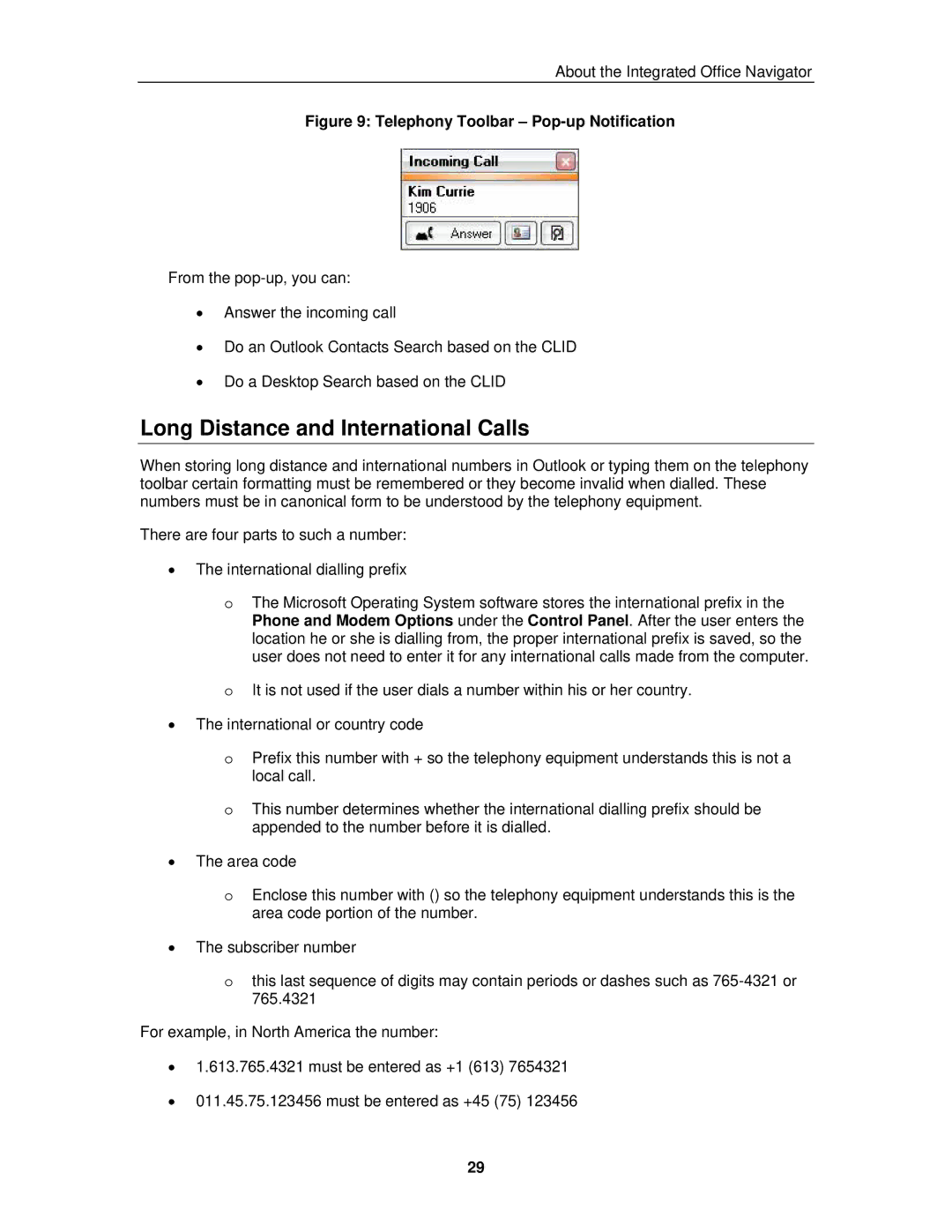
About the Integrated Office Navigator
Figure 9: Telephony Toolbar – Pop-up Notification
From the
•Answer the incoming call
•Do an Outlook Contacts Search based on the CLID
•Do a Desktop Search based on the CLID
Long Distance and International Calls
When storing long distance and international numbers in Outlook or typing them on the telephony toolbar certain formatting must be remembered or they become invalid when dialled. These numbers must be in canonical form to be understood by the telephony equipment.
There are four parts to such a number:
•The international dialling prefix
oThe Microsoft Operating System software stores the international prefix in the Phone and Modem Options under the Control Panel. After the user enters the location he or she is dialling from, the proper international prefix is saved, so the user does not need to enter it for any international calls made from the computer.
oIt is not used if the user dials a number within his or her country.
•The international or country code
oPrefix this number with + so the telephony equipment understands this is not a local call.
oThis number determines whether the international dialling prefix should be appended to the number before it is dialled.
•The area code
oEnclose this number with () so the telephony equipment understands this is the area code portion of the number.
•The subscriber number
othis last sequence of digits may contain periods or dashes such as
For example, in North America the number:
•1.613.765.4321 must be entered as +1 (613) 7654321
•011.45.75.123456 must be entered as +45 (75) 123456
29
